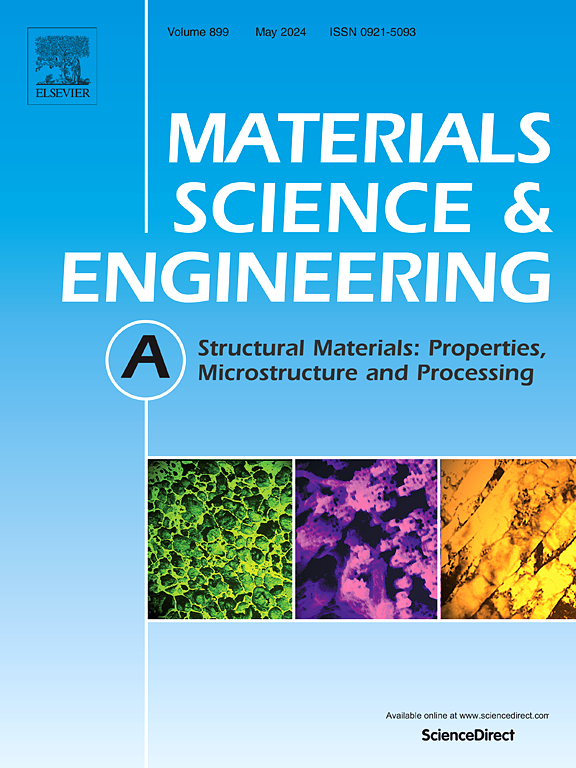Dynamic compression of dendritic high-entropy alloy Al0.5CoCrFeNi with various microstructures: Experiments and constitutive modeling
IF 6.1
2区 材料科学
Q1 MATERIALS SCIENCE, MULTIDISCIPLINARY
引用次数: 0
Abstract
The mechanical properties and microstructural evolution of as-cast and heat-treated dendritic dual phase high-entropy alloy (HEA) are investigated to provides valuable insights into their plastic deformation, particularly under varying strain rates and temperatures. The as-cast alloy, consisting of face-centered cubic (FCC) dendritic and body-centered cubic (BCC) interdendritic phases, is compared to a heat-treated variant, which contains additional needle-shaped BCC precipitates within the dendritic domains. Uniaxial compression tests are conducted across a strain rate range of 10−3 to 2000 and a temperature range of 173 to 673 K for both types of the alloys. The results show that the yield strength of the alloys increases with higher strain rates or lower temperatures. The heat-treated alloy, benefiting from the precipitate strengthening of additional needle-shaped precipitates, exhibits higher yield strength than the as-cast alloy. Dislocation slip and kink bands dominate the plastic deformation firstly. As the true strain increases, nano twins are observed. Cryogenic temperatures promote more nano twins with different variants. Additionally, different plastic deformation partitioning behaviors between the FCC and BCC phases are observed due to the microstructure differences between the two types of alloys. Furthermore, the Johnson-Cook-Cowper Symonds (JC-CS) constitutive models are developed and successfully describe the plastic flow of both types of the alloys over a wide range of strain rates and temperatures, providing a valuable tool for future research and applications.
求助全文
约1分钟内获得全文
求助全文
来源期刊

Materials Science and Engineering: A
工程技术-材料科学:综合
CiteScore
11.50
自引率
15.60%
发文量
1811
审稿时长
31 days
期刊介绍:
Materials Science and Engineering A provides an international medium for the publication of theoretical and experimental studies related to the load-bearing capacity of materials as influenced by their basic properties, processing history, microstructure and operating environment. Appropriate submissions to Materials Science and Engineering A should include scientific and/or engineering factors which affect the microstructure - strength relationships of materials and report the changes to mechanical behavior.
 求助内容:
求助内容: 应助结果提醒方式:
应助结果提醒方式:


